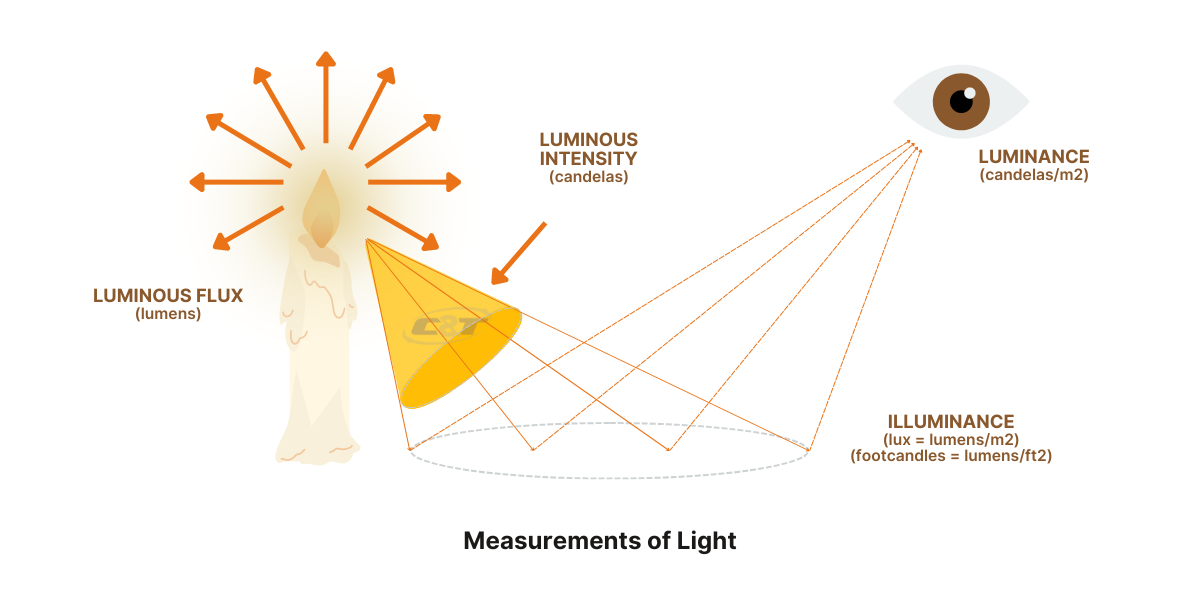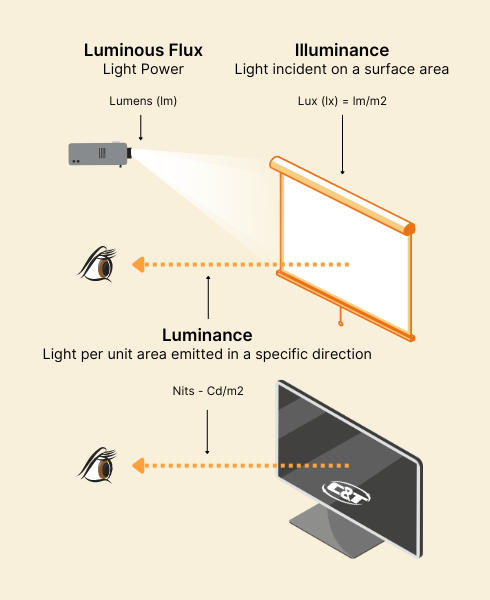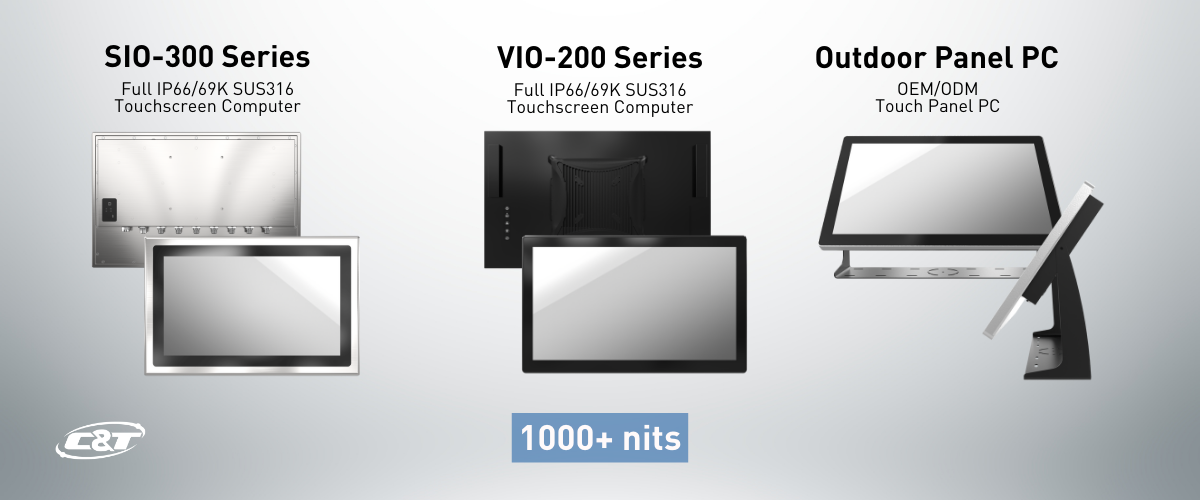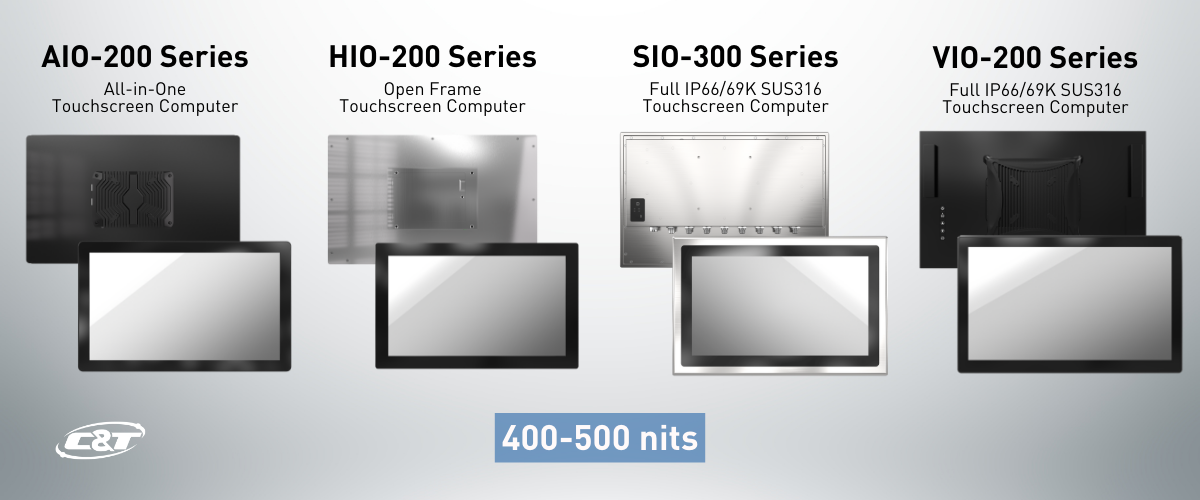What is Nits Brightness?

When choosing a display, whether it’s for your smartphone, computer, TV, or even industrial equipment, one of the key features to consider is its brightness. But how is brightness measured? This is where "nits," a term derived from the Latin word nitere, meaning "to shine," comes into play. This blog will delve into the essence of nits, highlight their importance across various settings, including industrial environments, and assist you in selecting the optimal display brightness for your specific requirements.
What are Nits?
"Nits" is a unit of measurement used to quantify the luminance or brightness of a screen. One nit represents one candela per square meter (cd/m2) — the standard unit of luminous intensity in the International System of Units. This metric reflects how much light is emitted from a display, visible to the human eye over a specific area.

Brightness in displays directly influences how images are viewed under various lighting conditions. The nit value of a screen tells us how much light that screen can emit, which is crucial for determining its visibility in different environments. A higher nit value generally means a brighter display, making it easier to see details even in well-lit settings. In industrial environments, where conditions can vary from low-light interiors to bright outdoor locations, the nit value becomes even more critical.
Range of Brightness Levels
| Brightness Level | Nit Value | Typical Use Case |
|---|---|---|
| Low Brightness | Under 200 nits | Best suited for dimly lit environments and older models |
| Moderate Brightness | 200 to 600 nits | Ideal for indoor use and some outdoor use on cloudy days |
| High Brightness | 600 to 1000 nits | Excellent for bright indoor areas and outdoor settings |
| Very High Brightness | Over 1000 nits | Used in premium devices for HDR content and intense brightness environments |
Nits, Lumens, Lux: What's the difference?
When discussing display brightness, nits are frequently compared with lumens and lux.
Nits, lumens, and lux each serve distinct purposes in measuring light. Nits quantify luminance, focusing on the light intensity that a display emits per unit area, making it essential for evaluating screen visibility. Lumens measure the total visible light emitted from a source, encompassing the overall brightness output. Lux, meanwhile, calculates illuminance, reflecting the amount of light that illuminates a surface per unit area.
| Measurement | Unit | Description |
|---|---|---|
| Nits | Candela/m2 | Measures the luminance or brightness of a display |
| Lumens | Lumens | Quantifies the total visible light emitted from a source |
| Lux | Lux (lm/m2) | Measures illuminance or the amount of light that falls on a surface |

These differences are crucial when choosing the right unit for specific devices: nits for displays, lumens for light sources like bulbs and projectors, and lux for assessing lighting conditions in photography or interior design.
For example, a TV screen with 500 nits brightness is designed for clear visibility in various lighting conditions, whereas a 500-lumen light bulb focuses on illuminating a room evenly. Similarly, the brightness of theater screens, typically around 50 nits, is adjusted to ensure optimal viewing, contrasting sharply with the disruptive brightness of a smartphone screen, which can easily exceed 500 nits. This is why in movie theaters, using smartphones is discouraged due to the contrast in screen brightness
How many nits should an Industrial Touch Panel PC have?
The ideal nit value for an industrial touch panel PC largely depends on the specific environmental conditions where the device will be used.
Indoor Use: 250-600 nits
Suitable for most indoor industrial settings without direct sunlight.
C&T's touch panel PC product lines, including the AIO-200, HIO-200, SIO-300, and VIO-200 series, feature brightness levels ranging from 400 to 500 nits, making them well-suited for various indoor industrial settings where moderate to bright lighting is common. Additionally, these panel PCs boast a robust Mean Time Between Failures (MTBF) ranging from 30,000 to 50,000 hours for LED backlighting, ensuring reliability and longevity in demanding environments.
Outdoor Use: 1000 nits or more
Necessary for clear visibility in direct sunlight or brightly lit areas.

C&T's SIO-300 and VIO-200 series offer an impressive 1000-nit option, making them ideal for deployment in brightly lit indoor areas such as control rooms of power plants or transport hubs. These environments often feature intense overhead lighting, where high brightness levels are crucial for maintaining clear visibility of critical displays. For applications requiring deployment in direct sunlight, C&T provides specialized OEM/ODM services. These services include enhancements to block IR (Infrared) and UV (Ultraviolet) radiation, ensuring that the displays maintain optimal performance and durability even under harsh outdoor conditions.
Contact us to consult with our industrial technical experts.


